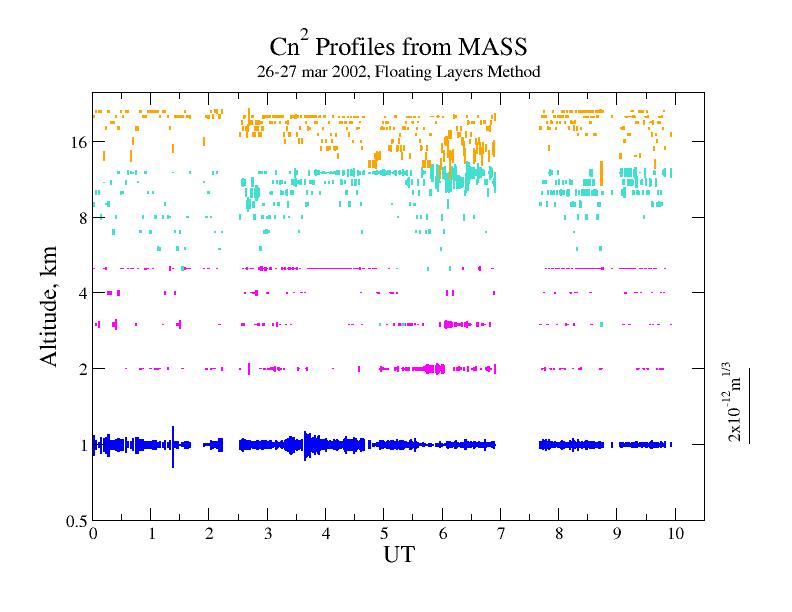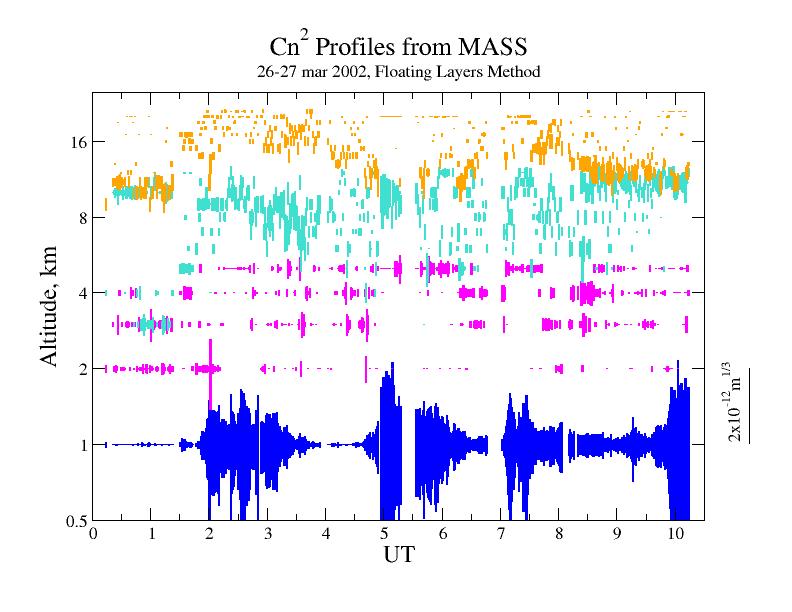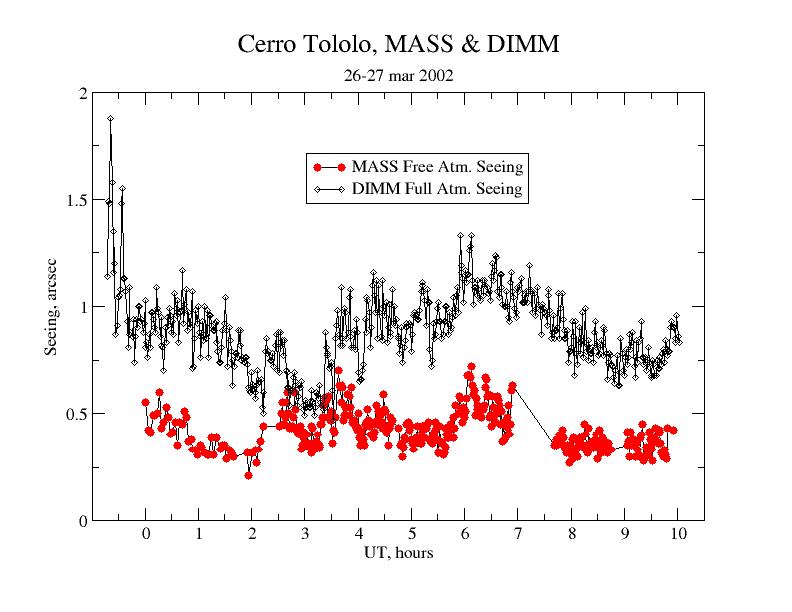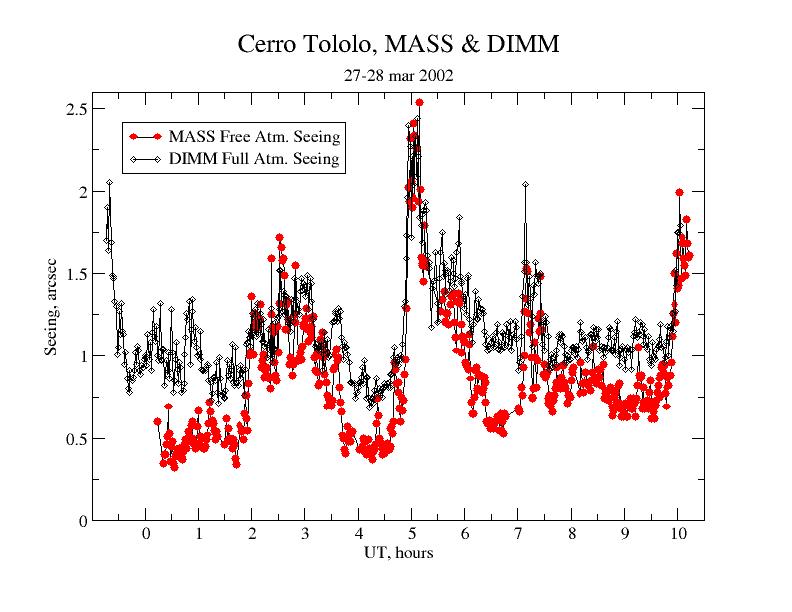

During 6 nights (March 19 to March 27, 2002) MASS worked at Cerro Tololo. It was operated by A. Tokovinin and N. Shatsky. The first night instrument worked in a non-standard configuration, being fed by the Celestron telescope (D-aperture was severely cut). The remaining 5 nights provided useful data in the standard configuration, with off-axis feeding telescope.
MASS with feeding telescope on a Losmandy mount were installed on the ground near the DIMM tower. The computer was located in the USNO building.
Top row: Cn2 profiles for the nights of March 26/27 and March 27/28, 2002. Scale of turbulent-slab intensities is indicated by the bar on the right. UT scales refer to March 27 and March 28, respectively. Data are taken at 1-min. rate, with some gaps.
Bottom row: comparison of the full seeing as measured by DIMM (black line) and the free atmosphere seeing (only layers above 1 km) measured by MASS (red dots). "Free" seeing is always less than full seeing, except occasional moments when upper layers dominate over ground/boundary layer.
 |
 |
 |
 |
| On the night of March 26/27 the upper atmosphere was stable. The seeing was mainly degraded by the layers below 1 km, except between 2h30 and 3h30 UT. | On the night of March 27/28, four episodes of strong turbulence at altitude around 1 km dominated the effects of all other layers, and during these periods both DIMM and MASS showed same seeing. |
In the Generalized mode, MASS measured the seeing somewhat worse than DIMM. We are investigating at present the reasons of this.